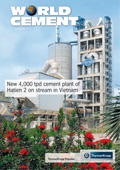Editorial comment
In just under three months, the 18th session of the Conference of the Parties to the UNFCCC (otherwise known as COP18) will meet in Doha, Qatar. For the past five years, at least, these COP meetings have intended to find a suitable follow-up to the Kyoto Protocol, which expires this year. The idea was to have an agreement already in place at Kyoto’s expiration so that there was no lag time between agreements, and no wavering in global commitment to meet the 2 °C target (i.e. limit global warming to a 2 °C temperature rise). By this point it would seem that this idea has failed on all counts. At no point in the last few years has the COP got even close to a Kyoto part 2; if anything that goal is getting further away.
Register for free »
Get started now for absolutely FREE, no credit card required.
The problem is not simple, exactly, but it can be neatly summarised as follows: the biggest polluters don’t want to commit to a binding agreement that could limit their energy options and in some cases curtail growth. Without their cooperation, the efforts of the remaining countries are frustrated. The window within which the 2 °C target is still a possibility is closing, rapidly. Already this year we have seen extreme weather across the globe cause fatalities and crop failure.
In my Editor’s Comment in January 2010, I mentioned Moisés Naím’s term: ‘minilateralism’, whereby small groups of countries collaborate to make their own accords rather than waiting to reach a multilateral agreement. Naím was writing in the aftermath of COP15, which was the conference of great expectations that amounted to nothing much. What did come out of it was the Cartagena Dialogue, one such minilateral group of 40 or so countries that occupy what is generally termed as ‘the middle ground’. Australia and the UK are in there, as are Bangladesh, the EU, Mexico, the UAE, South Africa – a real mix of developed and developing nations. The group ‘strongly advocates shared responsibility, promoting an approach that would see all countries reduce their carbon pollution, commensurate with their relative economic capacities.’1 Another minilateral grouping is the Climate Vulnerable Forum, ‘a global partnership of leaders of countries most vulnerable to climate change actively seeking a firm and urgent resolution to the growing climate crisis’. 2 This grouping includes the likes of Bangladesh, the Maldives, Australia and Japan – countries that are experiencing the impact of climate change and have expressed ‘deep concerns over the slow pace that international negotiations within the UNFCCC is taking to reach legally binding agreements necessary to meet the ultimate objectives of the Convention’.3
One country that is part of both these groups and has pledged that it will be carbon neutral by 2021 is Costa Rica, the location for this year’s Climate Vulnerable Forum and also the XXIX Technical Congress, organised by the Inter-American Cement Federation (FICEM-APCAC). There is more about Costa Rica’s efforts towards sustainability and a preview of the Congress on page 38 – 40. Also in this issue is an article from the WBCSD CSI on the ‘Getting the Numbers Right’ (GNR) database, which collects data provided voluntarily by CSI member companies and enables a chronological and geographical comparison. FICEM-APCAC joined GNR in 2011 and as Maria José Garcia, the Federation’s General Director, points out, the Latin American cement industry will now be able ‘to visualise its actual performance against global conditions, set goals for the future and work with policy makers on the base of figures that are opportune, transparent and precise’. No doubt there will be more information about this at the Congress. World Cement will be there to find out and, as usual, we will report back to you.
1) Australian government, Department of Climate Change and Energy Efficiency.
2) daraint.org/climate-vulnerability-monitor/climate-vulnerable-forum/
3) The AMBO declaration of the Climate Vulnerable Forum.


